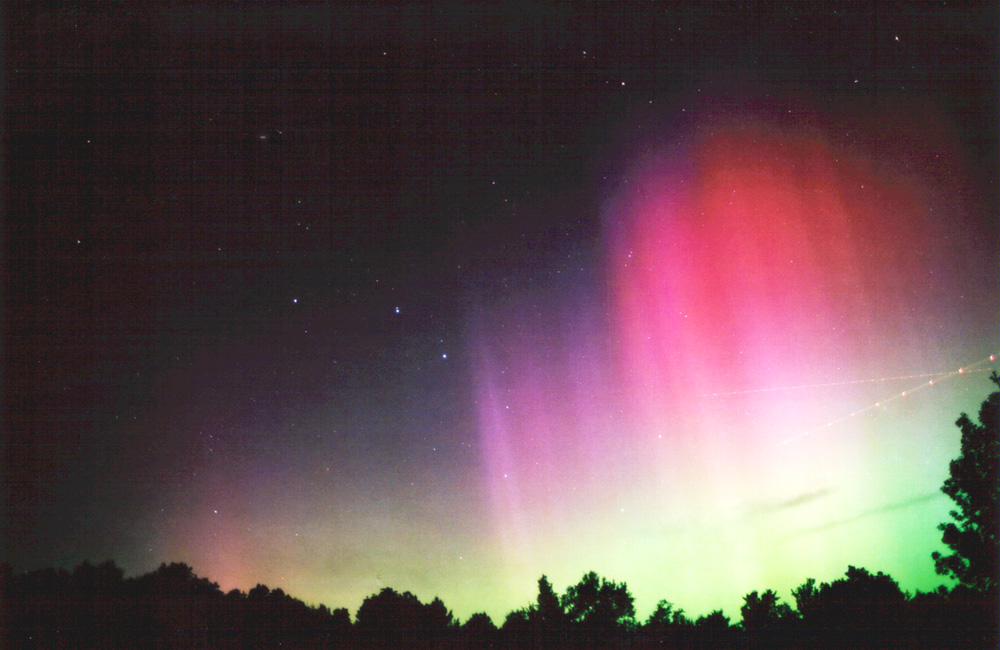
This page updated 10 September 2002
Connecticut Star Party 12 was another major success this year! This makes 5 years in a row that have had clear skies on at least one of the two nights. This year was special because a magnificent aurora display took place on Saturday evening. The daytime temperatures were quite warm (high 80's on Saturday) and the evening temps were cool (but not icy cold like some other years). As is usually the case, I took a number of photos at this year's CSP. I had decided early on to work with a 500mm lens (in previous years I had done quite a bit of wide field work). My planned targets were Milky Way clusters, larger Messier objects, etc. A big THANK YOU to ASNH members who worked hard to put together another great CSP!

Here is a wide angle shot of the aurora display that we were treated to. This is one of about a dozen shots I obtained. I missed the best part of the display... it came up suddenly and I was photographing another object at the time. It was a major pain to change camera equipment in the dark... I had to go from a 500mm lens (useless for an aurora display) to a 28mm wide angle lens. This requires a completely different set of camera mounting accessories, and I had a hard time finding the adapter I needed in the dark. By the time I got things changed over the best of the display had passed. The photo above is a 1 minute exposure on Kodak Royal Gold 400 film with a 28mm F2.8 lens. The lines and dots seen in the photo are a result of air traffic passing through the area at the time. This photo shows much color, the color was not visible to the naked eye (maybe some greenish tinge at best was visible). This was the first aurora I have ever seen, it was quite impressive!
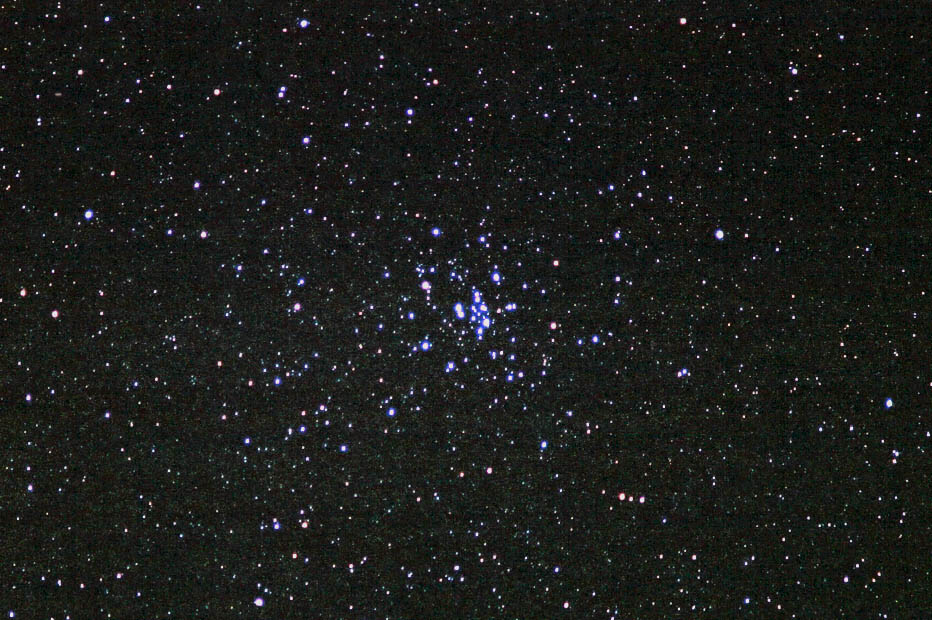
Here is a shot of M34 (open star cluster in Perseus). This was a 10 minute exposure on Kodak Royal Gold 400 film using a 500mm lens at F6.3. Guiding was done manually while the camera was riding piggyback on a Celestron CG-11 scope. This was my "warm up" object for the evening.

Here is a shot of the Double Cluster. The shot was taken with the same film, lens and exposure as the photo of M34 above. This shot shows the cluster complex at right and what I refer to as the "loop" (seen on the left side of the photo).

The Pleiades. One of my favorite objects, and one that is not difficult to photograph. This shot is a 10 minute exposure through a 500mm F6.3 lens.
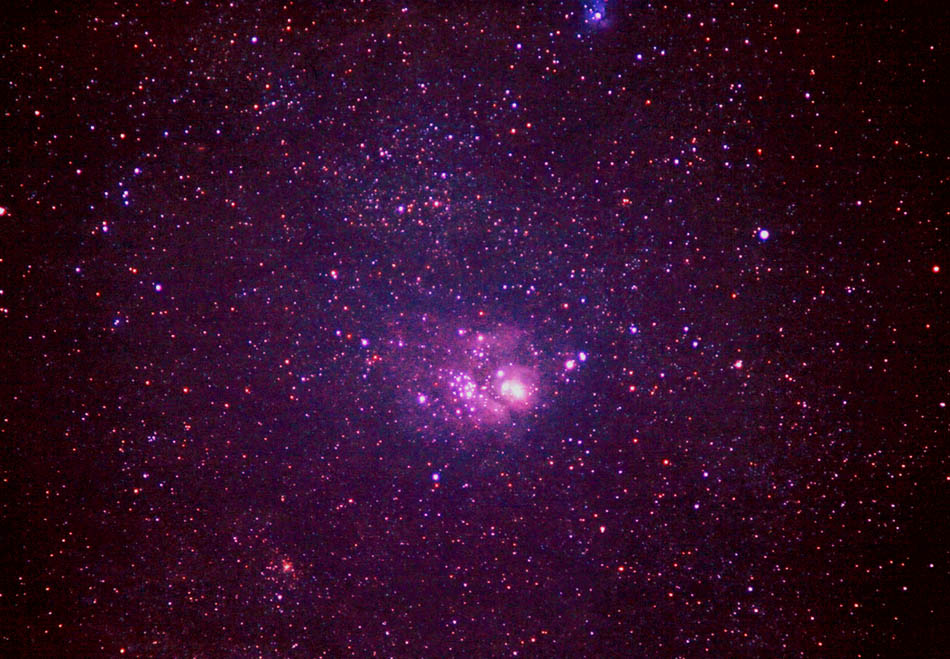
A photo of the Lagoon Nebula area. The Trifid Nebula (M20) can also be seen at the top edge of the photo. This shot is a 10 minute exposure through a 500mm F6.3 lens. The conditions at this low declination were not ideal, however it was still suitable for a photographic attempt!

Here's a shot of the open star cluster M23 in Sagittarius. This is one of numerous open clusters that can be seen in this part of the sky. This is an excellent binocular object and can be seen well in telescopes of the 60mm refractor class.
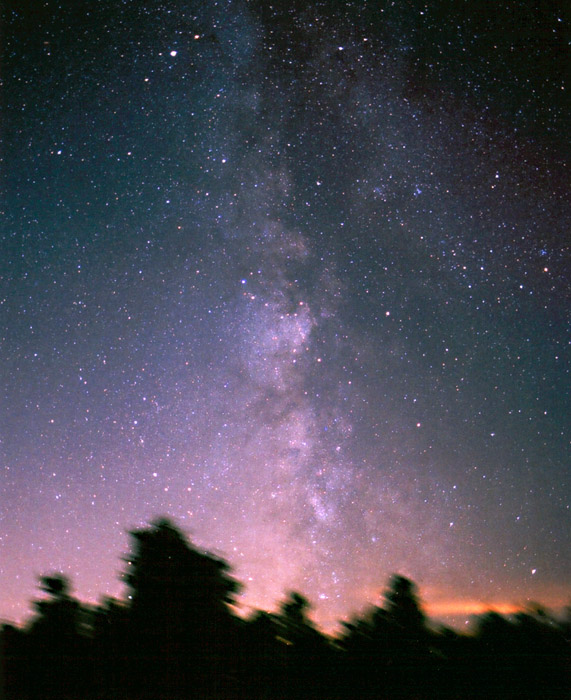
I was not planning to do wide field work during this event, however after the mad scramble to change lenses for the aurora I decided to take a few anyway. This is a wide angle shot of the southern Milky Way. The upper corners of the photo are a bit darkened due to lens vignetting (I hope to reprocess to remove this affect at some future time). The Scutum star cloud is very evident in this photo. The bright star just left of center at the top is Altair. The yellowish streak at the bottom right of the photo was apparently due to some haze or clouds. This was a 10 minute guided photo on Kodak Royal Gold 400 film using a 28mm F2.8 lens.
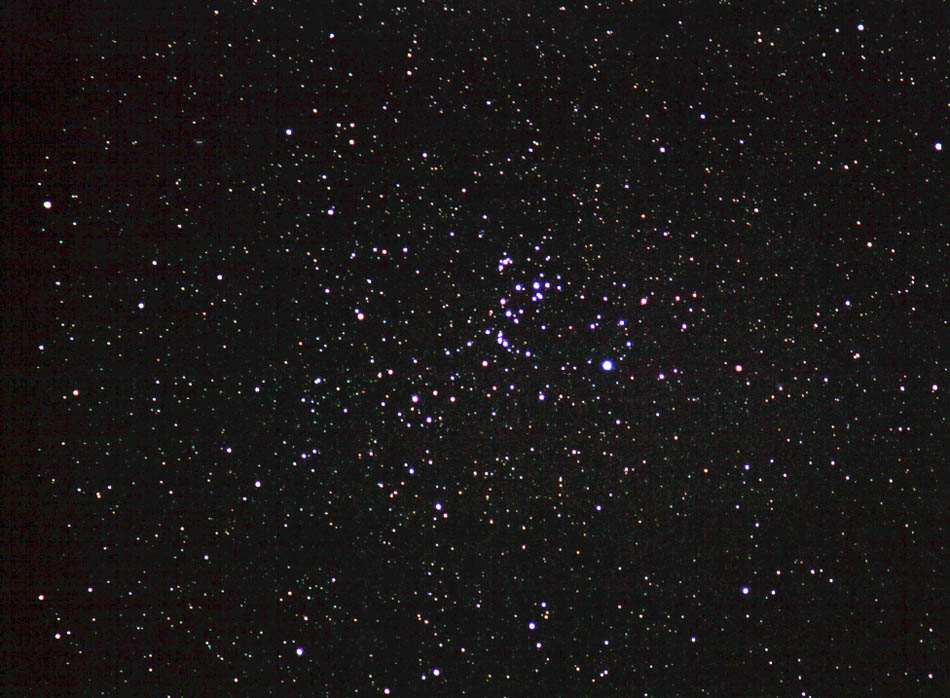
This is NGC6633, a cluster that mysteriously did not make Messier's list. This cluster is one of my favorites for small telescopes (I first saw this in 1975 using a 60mm refractor). This cluster is also an excellent binocular object.
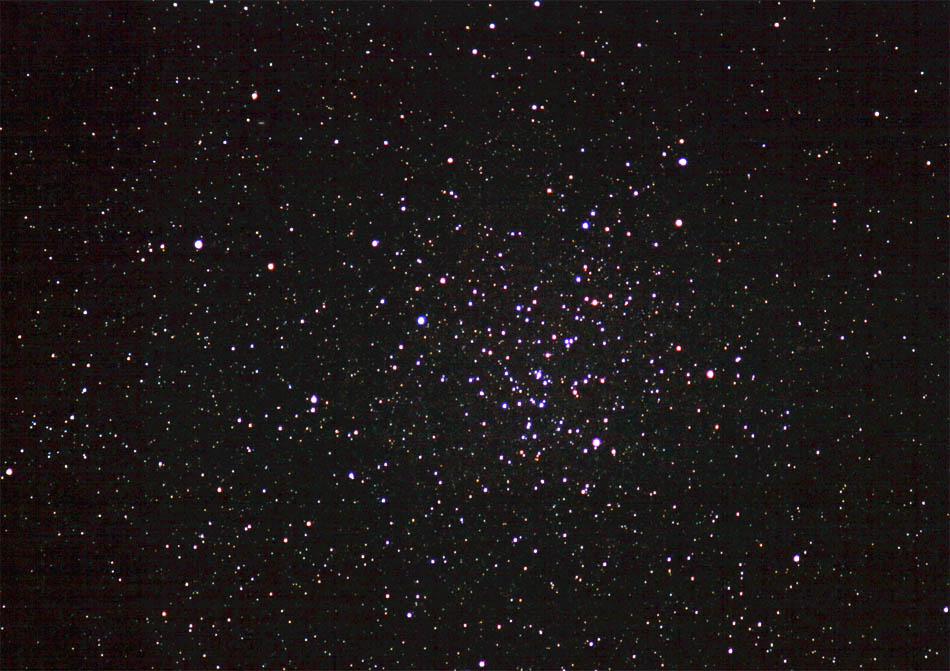
Another photo of a cluster that is lesser known: IC4756 in Serpens Cauda. This is a nice cluster and is probably lesser known due to not being on Messier's list. This is a LARGE object (shown here at roughly the saem scale as the Pleiades above), it is best seen in binoculars or in a telescope at very low power. This is a 10 minute exposure using a 500mm lens at F6.3 on Kodak Royal Gold 400 film.
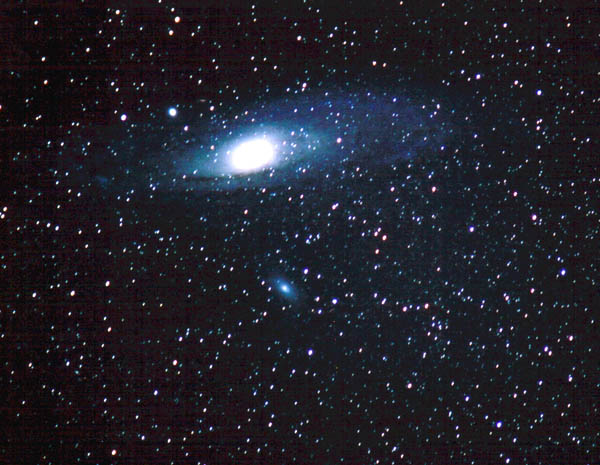
This photo of M31 and companions is a dud, however I included it anyway. This is a classic example of bad guiding. This is a 30 minute exposure on Kodak Royal Gold 400 film using a 500mm lens at F6.3.